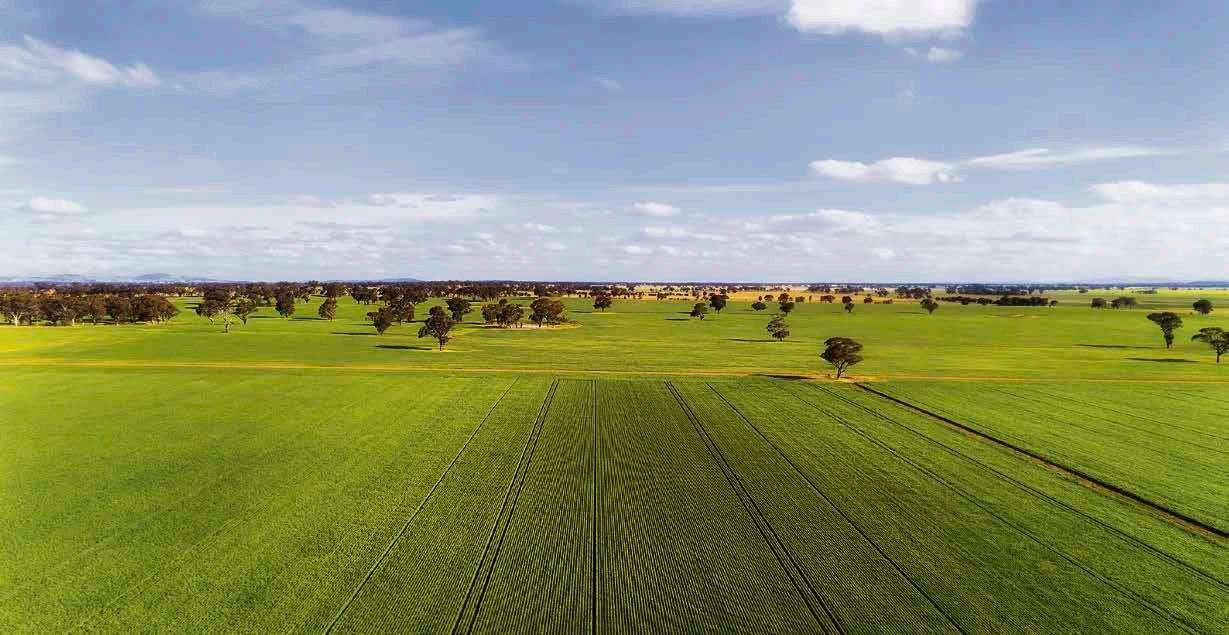

Lawloit farmer Alan Bennett has been forced to watch his sheep being eaten alive by wild dogs, after they came onto his property from the Big Desert Wilderness Park. The State Government shocked farmers last month when it lifted





















































Lawloit farmer Alan Bennett has been forced to watch his sheep being eaten alive by wild dogs, after they came onto his property from the Big Desert Wilderness Park. The State Government shocked farmers last month when it lifted


















































Serious delays by the Australian Pesticides and Veterinary Medicines Authority in approving agricultural chemicals is having real consequences for farmers.
A Senate Estimates Committee, the Rural and Regional Affairs and Transport Legislation Committee, confirmed 78 percent of assessment for major applications were completed by the end of 2023.
The authority has reported escalating delays in registrations of new agricultural crop protection chemicals, with more than one in nine applications for new product registrations not completed within the legislated assessment period.
While the full suite of performance authority’s results are yet to be publicly released, the Senate Estimates written answers confirmed 78.3 percent of assessments for major applications were completed on-time for the quarter ending December.
CropLife Australia says the delays are leaving Australian farmers exposed to millions of dollars annually in preventable crop losses.
Chief executive Matthew Cossey said it was the sixth successive quarter where the author-
ity’s performance for assessing major pesticides had dropped.
“It’s now 78 percent of what is a statutory timeframe requirement, so this simply means in real terms, farmers are being denied access to crucial products they need to deal with all sorts of challenges they’re facing, dealing with major diseases and pests,” he said.
“Fall armyworm, red legged earth mite, powdery mildew and fusarium crown rot are costing the farming sector dearly.
“Fusarium alone costs the farming sector more than $400 million a year. That’s why it’s so important we see this regulator improve its performance in terms of timing of assessments.”
Mr Cossey said politics, sensationalised claims that had resulted in no basis and a change in the chief executive of the authority had contributed to the delay.
“There’s no doubt that in the APVMA, Australia actually has a world renowned and highly respected regulator for agricultural chemistry,” he said.
“They have a very good reputation around the world for a very good reason. They’re seen as competent in a technical and scientific regulatory area, but what we are seeing, is their timing
Turn that scrap laying around the place into money you can spend on Mum for Mother’s Day
performance slip. And that has real consequences for Australia’s farming competitiveness.”
Mr Cossey said Australia’s farmers were facing some of their greatest challenges ever.
“A challenging climate that escalates disease and pests that need controlling, challenging international markets and a greater demand to be even more environmentally sustainable – the products the APVMA regulate go to the core of assisting farmers meet those challenges,” he said.
Mr Cossey said the authority was well-resourced and sat on significant cash reserves.
“It is a false economy to assert that timely assessment of new crop protection products needs to be sacrificed in order for the APVMA to meet the full breadth of its regulatory obligations, including chemical review and compliance,” he said.
“CropLife Australia and our members remain committed to working with the regulator and the government to implement efficiency measures that improve the performance and maintain the integrity and community confidence in the system and deliver better outcomes for Australian farmers, consumers, and the environment.”

Member for Mallee Anne Webster has called on the Federal Government to support effective mouse controls for Mallee farmers ahead of the cropping season.
Dr Webster said Agricultural Minister Murray Watt must ensure approved mouse control baits were working for farmers.
Grains Producers Australia, GPA, is seeking approval for continued use of 50 gram per kilogram zinc phosphate baits through the Australian Pesticide and Veterinary Medicines Authority, APVMA, after farmers were concerned currently approved 25 grams per kilogram baits would be ineffective.
“Our crops are the lifeblood for Mallee farmers and Minister Watt needs to ensure they are given the best tools to ensure as productive a season as possible,” Dr Webster said.
“We can’t have them using ineffective baits that let mice run riot.
“Farmers have told me zinc-25 baits are
costing $6 per hectare to put on, but once mice pick up one bait they feel sick and won’t pick up another – it is a waste of money and costs farmers when their crops are ruined.”
Dr Webster said GPA had a temporary permit for zinc-50 bait, which ran out in November and APVMA was yet to grant another.
“I understand training and other supervisory arrangements have been put in place for the continued use of zinc-50, APVMA simply needs to act and grant permission to use it,” she said.
“I have written to Minister Watt outlining the concerns of Mallee farmers and questioning why his government does not support effective mouse controls.
“Mallee farmers need all the help they can get to ensure a prosperous season free of mice infestation.”
The latest Senate Estimates revealed escalating delays in registrations of agricultural crop protection chemicals by the APVMA.




We pay for scrap metal with locations in Horsham and Ararat, we are committed to giving you the best prices for all your scrap.
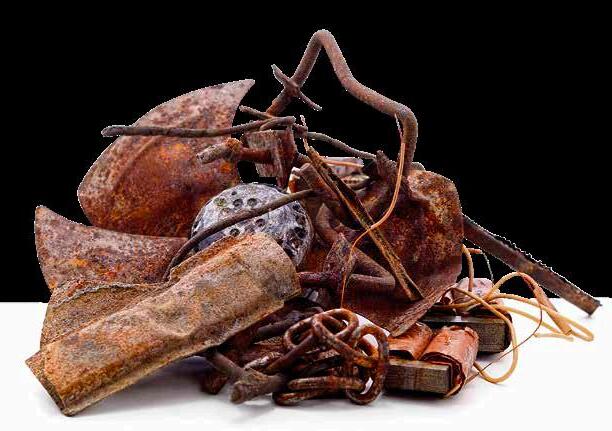






The Victorian Farmers Federation, VFF, is calling for several key government commitments to ensure farmers have confidence and certainty going forward.
VFF president Emma Germano met with Victorian Minister for Agriculture Ros Spence to explain the dire situation facing some farmers, and outlined several recommendations to avoid a repeat of the current situation.
“We warned that lifting the unprotection order for dingoes in the north-west would result in livestock maulings and deaths and sadly that’s exactly what’s happened,” she said.
“The blindsided nature of this announcement left farmers and communities completely unprepared and that’s simply not good enough.”
In response, the VFF has tabled the below to the State Government, including:
• A commitment to re-establish the Wild Dog Management Advisory Committee to help ensure future decisions are informed directly by the knowledge and experience of livestock producers.
• A commitment to support and fund wild dog management activities that give farmers and communities the suite of tools, which are proven to achieve outcomes.
• A commitment to support producers in the north-west with relevant information; to provide expedited decision-
making and granting of Authority to Control Wildlife permits; and an expedited review of the government’s revocation of the unprotection order.
Ms Germano urged farmers to report all interactions with wild dogs to Agriculture Victoria to place further pressure on the State Government to act.
“We know this decision is leading to more wild dog attacks on livestock,” she said.
“To help build the case for action, it’s crucial that farmers report all interactions with wild dogs to Agriculture Victoria, especially attacks on livestock and the number of stock impacted.
“Farmers in the north-west can also apply for Authority to Control Wildlife permits to manage dingoes through the government.
“It’s a sorry state of affairs when it’s left to us farmers to demonstrate the destruction of this decision, rather than consulting with us before it actually happens. Our goal is to directly show the government their actions have consequences and to trigger an urgent rethink.”
The government publicly advised late on March 14 the dingo unprotection order would conclude in north west Victoria, effectively that day. It claimed the decision followed ‘new research, strong advice and the effectiveness of non-lethal dingo control methods to protect livestock’.



It said farmers in the area would be supported by a $550,000 funding pool to adopt alternate non-lethal control methods such as exclusion fencing and guardian animals.
The funding would also support the management of other pests including feral goats, wild pigs and foxes.
In other parts of Victoria, dingo control measures remain unchanged, with the dingo unprotection order for eastern Victoria remaining in place until October 1.
Environment Minister Steve Dimopoulos said dingoes played an important role in the ecosystem and while dingo numbers were much
greater in other parts of the state, they remained a threatened species and were protected under the Wildlife Act.
Where livestock are being significantly impacted and there are no other control options available, all farmers – including those in north-west Victoria – can apply for an Authority to Control Wildlife permit to use lethal control methods.
The changes also mean the wild dog component of the current Fox and Wild Dog Bounty Program would not continue in the north-west, but the fox bounty would continue.
The Weekly Times reported last week Animals Australia dropped its Su-
preme Court case against the State Government’s dingo control program on March 19, just four days after the government agreed to protection order in the state’s north-west.
The move stunned farmers, who had been assured by Mr Dimopoulos and Ms Spence they and other stakeholders would be consulted on the dingo control review that was due to be finalised later this year.
The Weekly Times reported both ministers had refused to answer why the case had been dismissed and if some sort of deal had been struck with Animals Australia.
Member for Lowan Emma Kealy, also the Opposition’s agricultural spokesperson, said she was committed to working with all farmers in the area to help them deal with the changes that caught everyone by surprise and were introduced without consultation with the industry or landholders.
Ms Kealy said she would continue to advocate to the government to ensure farmers were supported and had the necessary mechanisms to ensure they could continue to effectively control wild dogs on their properties and protect their livelihoods.
She met with the Yanac Broughton VFF Landcare Group earlier this month and is assisting Lawloit farmer Alan Bennett to obtain a signoff for a permit on his property.




























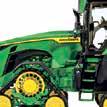







The State Government’s shock announcement to lift an unprotection order for dingoes and wild dogs in north-west Victoria has left farmers to deal with their sheep being eaten alive.
The unprotection zone borders state parks, where the latest Arthur Rylah Institute data indicates the dingo population is at risk of extinction with as few as 40 dingoes left.
The changes mean farmers can no longer use any wild dog control to protect livestock on private land.
Lawloit farmer Alan Bennett owns prime lamb and cropping farm across several properties, including a grazing block on the edge of the Big Desert Wilderness Park.
Mr Bennett said the changes coincided with a dry time of year, which resulted in the wild dogs leaving the park seeking water.
“The water is on the open country, and then if there’s sheep around, well then they’ll start attacking them,” he said.
“In the past, those dogs that have been causing trouble have been trapped and removed, or killed.”
Mr Bennett said the changes needed to be reversed and the unprotection order to remain for wild dogs coming onto private land.
“We just need to go back to the system we had that was established more than 30 years ago. It was established
through some very hard work from local people to recognise the fact we have a wild dog population in the Big Desert that has to be managed sustainably,” he said.
“The reason there are still wild dogs in the Big Desert, and they’re claiming now they’re genetically so pure, is testament to the management program that has been undertaken throughout the past 30 years. It’s not in spite of it.”
Mr Bennett said the previous system had been a win-win.
“It’s been a win for the dogs. They’re kept inside the park. They’re managed at a sustainable population when they get displaced through overbreeding or dry conditions and push out into the open country where they’re controlled and removed,” he said.
“And there’s minimal stock losses to the farmers around the edge of the Big Desert.
“Now, it’s a lose-lose. So a system that was working absolutely beautifully and relied on the generations of accumulated knowledge and experience of these local trappers to track and trap these troublesome dogs, only around the edge, not out in the park... the ones that are causing that, that’s going to go.”
Mr Bennett said the situation was an ‘absolute disaster now’.
“This will just continue to happen, unabated. Dog population will breed
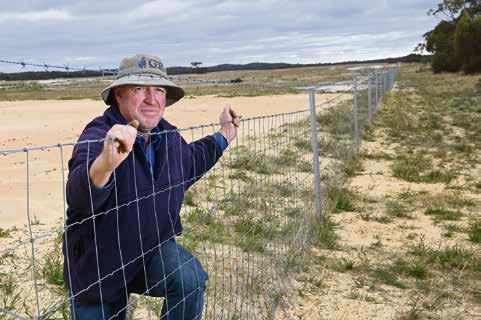
up to the unsustainable, they’ll push out in the open country, and attacks like we’re having, they’ll just become common now,” he said.
“It’s absolutely heartbreaking.”
Mr Bennett argued the animals were wild dogs, not dingoes.
“They look nothing like a dingo. They’re a wild dog,” he said.
“There’s been no consultation with landowners or the VFF or any of the parties that have been managing it.
“Now the stroke of a pen, it’s a loselose situation, so the dogs can do what they like.”
Mr Bennett said nobody could tell
Young farmers in western Victoria are encouraged to register for Agriculture Victoria’s ‘Cultivating Futures in Farming’ mentor program.
Agriculture recovery officer Tanya Dobrijevic said the free program would provide young farmers in grains or mixed farming enterprises with the tools and resources to enhance their farm business management.
“Participants will improve their skills and knowledge to better prepare for and manage risk, adapt to change and strengthen their farm businesses,” she said.

identification; people management; leasing and share farming; natural resource management.
“For anyone thinking about joining the course, we are holding a webinar to provide an overview of the program and topics that will be covered, plus a chance to meet the facilitators,” Ms Dobrijevic said.
The introductory webinar will be on May 16 from noon.
the affected farmers why the decision was made.
“The other sad part is that a small group of landowners will have to carry the full cost of this decision,” he said.
Mr Bennett said the $550,000 government funding announced to assist farmers for other control methods would not actually help on-the-ground.
He said the government’s assurance that farmers experiencing stock losses could apply for Authority to Control Wildlife permits was not working.
“Basically, I just get the impression they don’t believe it’s happening.
“I’m the one who’s supposed to prove everything.”
Mr Bennett said in the time it took for a response about his permit application, there had been multiple attacks on his property.
“We can’t tell the dogs to go on holidays while they sort it out,” he said.
“So they’ve made the decision, but they don’t have the processes around to be able to react quickly enough to say I’m allowed to trap a dog killing my sheep.”
Mr Bennett said the wild dog attacks were particularly gruesome.
“They don’t kill the sheep, they actually eat them alive,” he said.
“They’ll go and bite multiple sheep until they find one that’ll flop. Then they just start eating them until the sheep eventually dies from blood loss or shock or whatever.
“Then they’ll come back tomorrow if they want to and they won’t eat the carcass of the one they killed yesterday. They’ll go and attack another 10 or a dozen until they find one that’ll flop or give up and then they’ll eat that one alive.”
“It’s just become a political hot potato and nobody wants to tackle it,” he said. “It’s soaked up an enormous amount of my time and effort following up on this and trying to provide information to the relevant authorities about the attacks we’re getting.




The program, delivered in partnership with Pinion Advisory, will provide mentoring on a variety of topics including: risk management; opportunity
“Past participants have benefitted from the clarification of business goals and drawing focus to the roadblocks to achieving these goals.”
For more information, people can visit agriculture.vic. gov.au/support-and-resources/ networks/young-farmers/ cultivating-futures-in-farming. People can register by visiting bit.ly/3TbaNYT. There are limited places available.






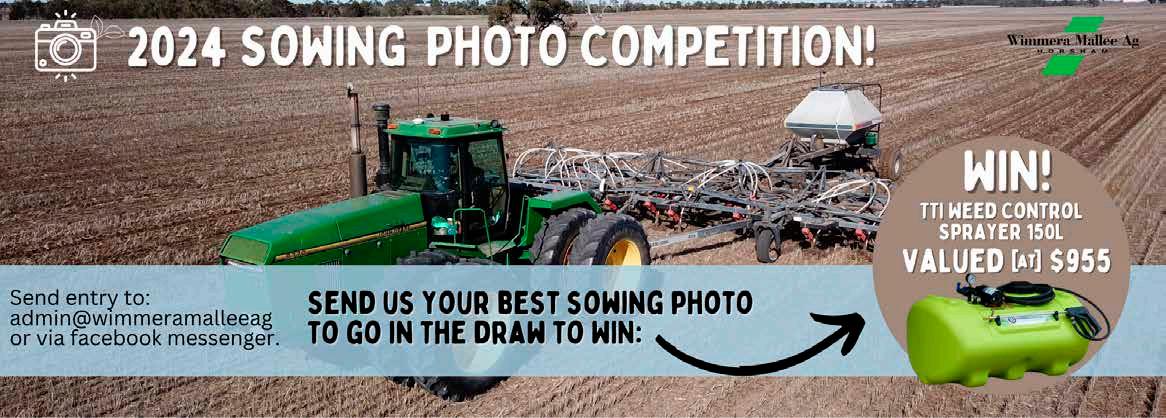













Varying rain totals across the region so far this month has resulted in many hesitant to call an autumn break just yet.
For the month up until April 19, the following rain totals at Bureau of Meteorology sites have been recorded: Horsham 29.4 millimetres; Edenhope 16.8mm; Kanagulk 17.6mm; Hopetoun 16.8mm; Walpeup 10.8mm; Longerenong 29.4mm; Nhill 15.8mm; Stawell 33.6mm; Warracknabeal 13.4mm; Ararat 61.4mm; and Mt William 62.2mm.
Many areas of western Victoria did not register rain in the month of March, and experienced warmer temperatures.
Some parts of south-west Victoria experienced their driest March on record.
Agricultural Victoria seasonal risk agronomist Dale Grey said Mallee was dry, but it was not unusual for March.
“March was quite dry. It’s all or nothing in autumn. The weather is beautiful and then it’s terrible, it’s hot and then cold, it’s wet and then it’s dry,” he said.
Soil moisture had improved in some areas following the rain, but in many areas it remains unchanged.
“Cropping paddocks in the north are at high levels, which augers well for the northwest, but increases the waterlogging risk in the medium to high rainfall areas,” he said.
Mr Grey said in areas of the Wimmera, Mallee and south-west region that have had about 15 millimetres, it was more of a hindrance than help in terms of being useful for germination.
He said it was difficult to predict more than seven days at the moment.
“In terms of the climate, nearly all the world’s models are sitting on a neutral pattern, which is code for plan for anything,” he told ACE Radio’s Country Today.
“It is interesting to note that half of the world’s models have a drier signal for south-western Victoria. I honestly don’t know whether to believe that or not, but it sort of shows that half those models are detecting something down in the southwest there that looks like maybe that frontal activity is going to play up a bit,” he said.
“I think all the world’s models have a warmer next three months, which is in keeping with the sort of warmer weather we’ve had over summer.
“And, of course, March was actually much warmer than normal, so we’ll see how we go with April and May, but it’s a case of hang on for the ride of autumn.
“It’s not often the whole state gets off to an amazing start at the same time, and it looks like that’s what we’re seeing at the moment.”

To help all Victorians play their role in keeping the state safe, Agriculture Victoria’s new podcast season ‘Biosecurity basics’ takes a deep dive into the fundamentals of biosecurity.
The podcast covers practical things listeners can put in place to play their part in protecting animals and the environment.
Emergency animal disease industry engagement program manager Kellyanne Harris said listeners would hear from people engaged in biosecurity.
“It doesn’t matter how many animals you have, how big or small your property is, biosecurity is everyone’s business,” she said.
“Every livestock owner or person living on a small or lifestyle farm can make changes today to improve



biosecurity and help protect their property from pests and diseases.
“Created in collaboration with RSPCA Victoria, the new AgVic Talk series features experts from RSPCA Victoria and Agriculture Victoria as well as farmers who share their knowledge on how people can build biosecurity into their day-to-day farming practices.”
In episode one, Erica Smith of Glenstrae Highlands talks about how she went about introducing some basic biosecurity practices when setting up her property in Gippsland.
In episode two, Brett Davidson from Agriculture Victoria and Rachael Laukart from RSPCA Victoria cover how both agencies are helping producers manage risk and improve their biosecurity practices.
STORIES
SHARED: Erica Smith of Glenstrae Highlands talks about how she went about introducing some basic biosecurity practices when setting up her property.
“Listeners will receive advice on what to include in a biosecurity plan, the importance of Property Identification Codes, PICs, and where to go for tips and advice about biosecurity practices, and steps you can take on farm,” Ms Harris said.
People can subscribe and listen to ‘Biosecurity basics’ on AgVic Talk wherever they get their podcasts. They can either subscribe to AgVic Talk on Spotify or on Apple Podcasts.
To find out more and listen to other AgVic Talk episodes, visit agriculture.vic.gov.au/agvictalk.
People can also find out more about Agriculture Victoria’s work on managing biosecurity in Victoria, by visiting agriculture.vic.gov.au/ biosecurity.
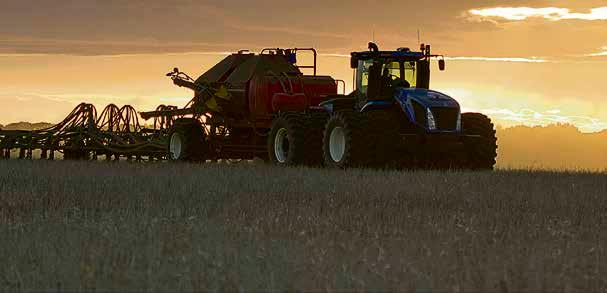
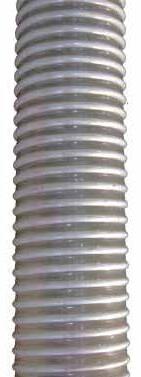

Goodyear’s Spiraflex Air Seeder hose is designed for use in Air Seeding applications where there is a requirement to view the product being conveyed.
This hose is specially formulated with a Clear Thermosplastic Urethane Liner offering superior wear resistance in not only seeding applications, but many other dry bulk material delivery applications.
In stock ready for the 2024 season

Goodyear Engineered Products Australia is very pleased to introduced our USA made Spiraflex Air Seeder Hose. It was developed exclusively for use on OEM air seeder applications in the North American market and is now available in Australia.

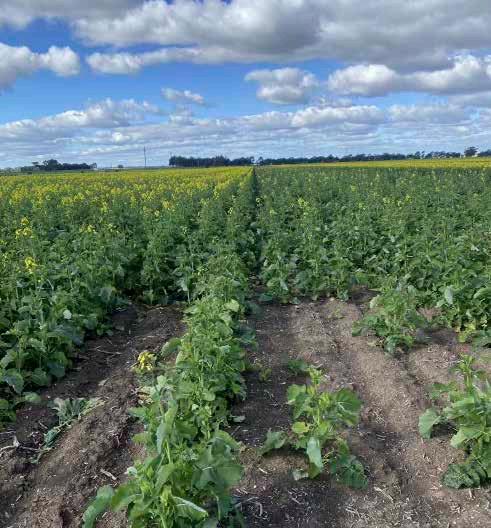
Slug damage can lead to reduced plant numbers and reduced yields.


As we enter the sowing period, amongst the plethora of things that are regularly talked about are slugs. Anyone who has farmed in traditional slug areas or not far from them will be all too familiar with these voracious pests. Slugs typically like heavier soils with good moisture, but I have observed them in everything up to and including rising buckshot gravel country.
2023 saw another good year for slug breeding through the wet and cool winter into spring. Although there was certainly activity during the wet summer period, the jury is still out on whether this will lead to another opportunistic breeding event. Regardless, populations are already high, and we’re primed to see an influx of these menaces again this year.
We have two primary species in the Wimmera, the first is the grey field slug. Despite the name they vary in colour from banana yellow to a mottled brown and just about everything in-between. These guys tend to live close to the surface and because of this are typically the first we
observe at the early crop and pasture growth stages.
The second species is the black keeled slug, while it too varies in colour it’s typically a solid brown/ black. Black keeled can bury down into the soil up to 1m and tend to emerge later once the moisture profile has filled. They often turn up after you think you’ve got on top of things and on rare occasions have been known to pull down 6 leaf canola plants.
So how do we manage them?
Susceptible crops include but are not limited to; Canola, legumes and pulses, cereals and pastures, pretty well anything you put in the ground, with any late sown paddocks being especially vulnerable. If a paddock has had slug activity or is in slug ‘habitat’ and planned to be sown into a susceptible species I recommend having bait traps set out in the lead up to sowing.
A hessian bag or a tile with a small amount of bait underneath can be a good indicator of slug numbers. Bear in mind that 1 slug per 1m2
meets the economical threshold for managing them.
Baiting immediately post sowing and being prepared for a follow-up application should be considered the minimum requirement in high-risk areas. Monitoring every other day for the first few weeks after emergence is also a must, particularly if hoping to avoid a second baiting. Check areas along fence lines, around dams or any areas of bush. They can however emerge in the middle of paddocks too so ensure that you’re covering ground. It is time consuming for sure, but it beats the time and cost of resowing.



Grain volumes moved by rail in Victoria increased by 95 percent between July and December 2023, compared with the same period in 2022.
It also increased by 57 percent between July 2023 and March 2024, compared with the previous year.
The incline resulted in an extra 500,000 tonnes of grain transported across the state by rail – with one standard 3000-tonne grain train carrying about $1.2 million worth of produce being the equivalent of removing 70 B-Double trucks from regional roads.
Earlier this month at GrainCorp’s Geelong export terminal, Minister for Ports and Freight Melissa Horne saw firsthand how more than $181 million in State Government investment in the rail freight network helped make rail freight more efficient and attractive across the $4.4 billion grains industry.
The rail freight network is integral in shifting more grain by rail freight for domestic and export markets.
Ms Horne said the improvements allowed heavier trains to discharge at Geelong Port through increasing axle-load capability at key grain handling sites as well as through recommissioning the Gheringhap loop near Geelong.
“Our targeted investments in our regional freight network have given our grain industry the confidence to put more of their grain on trains more often – helping to take more trucks off our roads,” she said.
V-Line has delivered axle-load capability upgrades across Piangil, Woorinen, Tocumwal, Murchison East, Elmore, Mitiamo, Charlton and Wycheproof, with more upgrades in the pipeline.
GrainCorp has also invested in rail improvements at several of its sites.
GrainCorp chief operating officer Klaus Pamminger said GrainCorp was working closely with the State Government and industry stakeholders to improve rail infrastructure in Victoria, to facilitate quicker and more efficient movement of grain from sites to end users in domestic and export markets.
Further confidence in the rail network was demonstrated by operator Southern Shorthaul Railroad’s purchase of 22 new broad-gauge grain wagons – the first order for new broad-gauge grain wagons in 16 years.
In October 2022, V-Line, bulk grain handling companies and rail freight operator Pacific National formed the Grain Rail Improvement Plan Working Group – formalising their commitment to optimise the rail freight network.

With Birchip Cropping Group’s Young Farmer Network rapidly expanding, senior manager of extension and communications Grace Hosking is encouraging more young farmers to register with the group.
An influx of new members attended events in Kaniva, Boort, Warracknabeal, Sea Lake and Bridgewater.
Ms Hosking said the members were enthusiastic to learn and to meet new people.
“In our role as the Vic Hub’s North West Broadacre Node, BCG has brought together hundreds of young farmers from across the





region in recent weeks to build knowledge, create networks and support each other through our Young Farmer Network events,” she said.
Ms Hosking said the diversity of the establishing group was broad, with farmers, employees, contractors and agricultural professionals attending – a testament to the supportive environment and the breadth of topics the network aimed to address.
“BCG’s Young Farmer Network is targeted towards the youngest generation on farm and is not exclusive to farm owners,” she said.
“We encourage registrations

from anyone who wants to grow their network while keeping upto-date with the latest agronomic advances.
“Registrants will have first access to event tickets and will help drive the focus of future meetings planned throughout the growing season.”
The next BCG Young Farmer Network meetings will be held across the Wimmera and Mallee in June.
People can register their interest at bcg.org.au/services/bcg-youngfarmer-network/.







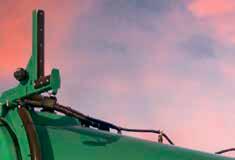




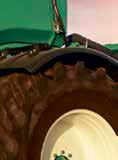
















































































BY BRONWYN HASTINGS
Wimmera Poultry Club’s first fundraising auction at its new Natimuk location is on Sunday.
Previously housed at Horsham Showground, the club has moved to a space at Natimuk Showgrounds.
Poultry club president Brendan Lloyd said although the new location was smaller in size, it was more modern.
“We had been at the Horsham site for many years,” he said.
“The shed was purpose-built using timber from the old stables behind the Bull and Mouth Hotel, and it had a dirt floor.
“Our new location is a steel shed with a concrete floor.”
Club members have moved the pens from Horsham, altering them to suit the new space.
“We fit 540 pens in the old shed and will fit about 400 pens in the new one, so we have had to cut the bank of pens into sections to fit them in,” Mr Lloyd said.
“We’re also in the process of adding wheels to them so we can move them around.”
Hosting two auctions and two shows a year, Sunday’s auction will bring a variety of poultry, birds, small animals and sundry items under the hammer.
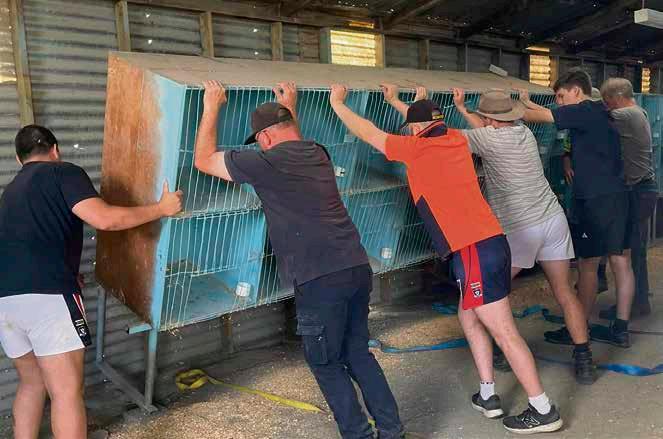
“The auction is capped at 150 pens, with a maximum of three birds or items per pen,” Mr Lloyd said.
“We are expecting budgies, ducks, guinea pigs, turkeys, guinea fowl – all kinds of things.
“In the past, we have had items such as feeders and they’ve sold out before the auction started.”

The auction will begin at 11am and will raise money for the alterations needed on the pens, which the club is also seeking sponsorship for.
“We are looking for some sponsors to help us cover the costs of setting up in the new space,” Mr Lloyd said.
“On top of the alterations to
the pens, we will have to repaint them, too.”
Refreshments will be available at the auction, which begins at 11am at the showgrounds on Jory Street, Natimuk.
People wanting more information about the auction or sponsorship can visit the Wimmera Poultry Club’s Facebook page.
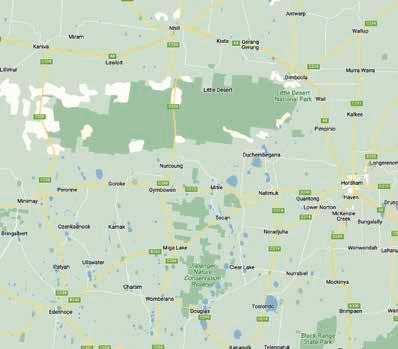
Is there a technology, innovation or research finding that your producer group is keen to test on-farm?
Agriculture Victoria, in partnership with Meat and Livestock Australia, MLA, is conducting a new producer demonstration program with the opportunity to establish five new on-farm demonstration projects.
Agriculture Victoria farming systems project leader Bindi Hunter said the program was inviting expressions of interest from sheep and beef producer groups to design and conduct their own three-year project.
“The demonstrations are conducted on group members’ farms – preferably three sites per project a year – and involve participation by members in group activities, including skill development, site monitoring and discussion of results,” she said.
“Projects must be focused on increasing adoption of key management practices or commercially available technologies that improve business profitability, farm productivity and sustainability.”
Selected projects will focus on demonstrating systems or technologies in one of four areas:
• Manage and adapt to a changing climate or specific regional conditions, for example addressing feed gaps, grazing system, enterprise mix.
• Reduce emissions or emissions intensity, for example reproductive efficiencies, feed types and quality, soil fertility management.
• Manage animal health and welfare risks resulting from increasing and emerging biosecurity threats in a changing climate.
• Implement on-farm innovations that improve production and management efficiencies.
Expressions of interest close on May 13. For more information and to receive an expression of interest form, visit go.vic.gov.au/3fTKvdU or email Ms Hunter via bindi.hunter@agriculture.vic.gov.au.

Contact Horsham Autoglass
or










BY JIM MORAN AGRICULTURE VICTORIA
Livestock producers are reminded they must adhere to biosecurity laws when importing grain and fodder from interstate.
Varying weather conditions since late 2023 are likely to have impacted the quality and quantity of available local fodder across much of eastern Australia, resulting in livestock producers sourcing interstate fodder to meet ongoing feed demand.
Fodder movement laws are in place to prevent the spread of weeds, pests and diseases beyond known infestations and onto your paddocks.
To mitigate these threats, Agriculture Victoria administers legislation Plant Biosecurity Act 2010, aimed at preventing the introduction, establishment and spread of biosecurity threats.
This legislation describes restrictions on the entry into Victoria of material, which is a host of a specified pest or disease.
There are penalties for non-compliance with the Plant Biosecurity Act, check all the biosecurity requirements that apply to the importation of grain, fodder and other livestock feed products in the Victorian Plant Quarantine Manual, PQM.
More information can be found via go.vic.gov.au/3PudQKK.
In some cases, the consignment will need to travel with a Plant Health Certificate, PHC, issued by biosecurity officers in the source state.
The certificate assures Victoria the prescribed conditions for entry, including sampling, testing, inspection and other analyses, have been conducted and the consignment is free from risky pests and diseases.
If inspections and certification are required, there will be additional costs beyond the quoted price for the product.
An example – cereal grain and hay for feeding livestock
The entry or importation of cereal grain – wheat, barley and oats – and lucerne, pasture and cereal hay into Victoria for livestock feed is prohibited unless it meets Condition 20A of the Victorian PQM.
The condition states:
• It must originate from a state or territory free from Annual Ryegrass Toxicity, ARGT, including Queensland, Northern Territory and Tasmania, where the respective State Government has issued an area freedom certificate for ARGT.
• If it comes from New South Wales, Western Australia or South Australia, it will need to travel with a Plant Health Certificate, PHC, issued by biosecurity officers in that state. This assures Victoria the consignment is

free from ryegrass containing the bacterium that causes ARGT.
• If grown or packed on a property within 25 kilometres of a green snail infestation, it is prohibited under Condition 23D in the Victorian PQM. A PHC or Plant Health Assurance Certificate, PHAC, must accompany the consignment to certify compliance with this entry condition.
The entry or importation of grain legumes – chickpeas, faba beans, field peas, lentils and lupins – from any state, into Victoria for stock feed only, is allowed without restrictions.



It is important to note importing seed into Victoria for planting involves further and different quarantine conditions to be met and might well be prohibited, depending on the origin state and species of plant.
The Catchment and Land Protection Act states you cannot bring noxious weeds into Victoria and that anything contaminated with noxious weeds are prohibited.
Information about weeds that should be vigilantly monitored for can be found via go.vic.gov.au/3PqL6T9.
Be rigorous with your interrogation about the quality, integrity, providence and composition of the feed you are buying and importing.
You do not want to import new problems such as noxious and problematic invasive weeds.
If possible, feed your livestock only in designated quarantine paddocks, where any potential issues can be contained and are easier to look for.
Thereafter, be on the lookout for anything new or suspicious that germinates in your paddock and have it identified and eradicated quickly.
Practical and inexpensive farm biosecurity tactics are found at agriculture.vic.gov.au/biosecurity.
For more information on the biosecurity entry conditions, when importing feed for your livestock from
interstate, and for any other biosecurity query, contact Agriculture Victoria to speak to a biosecurity officer on 136 186.
Grain machinery
Importing second-hand farm machinery such as tractors, seeders, sprayers, harvesters, baling or storage equipment from interstate can provide an alternative to buying brand new. However, there are a few matters to consider before you buy.
Besides the costs of the machine and its transport, there are other costs involved in ensuring the machine meets Victorian biosecurity legislation, Plant Biosecurity Act 2010, and the conditions of entry described in the Victorian Plant Biosecurity Manual, which can be found at agriculture.vic. gov.au/biosecurity/moving-plantsand-plant-products/plant-quarantinemanual.
Used agricultural equipment and spare parts could pose a high risk to Victoria’s unique environment and agricultural industries.
Given the nature of their work, there is a high possibility used machinery could harbor weeds, pests and diseases that we do not want in Victoria. Therefore, unless they meet specific conditions of entry outlined in the Plant Quarantine Manual, PQM, they are prohibited from entry.





Hundreds of Victorians are taking the opportunity to undertake private burn-offs as fire restrictions continue to ease across the state.
CFA and partner agencies will be making the most of cooler autumn conditions to conduct fuel reduction burns to lower bushfire risk for communities, while farmers and private landholders will capitalise on favourable temperatures to ignite stubble burns on their properties.
CFA chief officer Jason Heffernan said although CFA and Forest Fire Management Victoria work closely with the Environment Protection Authority and Bureau of Meteorology to keep smoke impact as low as practically possible, smoke in regional and rural areas could come from a number of sources.
“Along with the important planned burns that are conducted in our forests, parks and reserves led by Forest Fire Management Victoria, FFMV, and the many kilometres of road, rail and council reserve burns that are led by CFA, this time of year also sees a large amount of smoke coming from the necessary burn-offs that our farmers and rural property holders undertake,” he said.
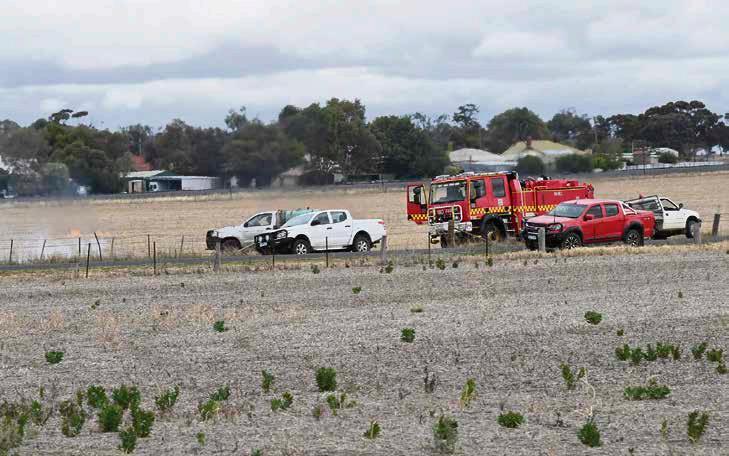
incident will be cross-checked on the register.
For the latest information about when and where planned burns are occurring near you, residents are encouraged to sign up to Planned Burns Victoria at www.plannedburns.ffm. vic.gov.au and download the App.
If you do see smoke and want to know if it is a planned burn or a fire, visit the VicEmergency App or visit emergency.vic.gov.au.
Detailed information about smoke forecasts, current air quality in your area and health advice can be found on EPA’s website.
Keep it safe and legal
Check fire restrictions in your area and always register your burn at www. firepermits.vic.gov.au or by calling 1800 668 511.
Check and monitor weather conditions – particularly wind.
To avoid unnecessary calls to emergency services, notify your neighbours beforehand.
As the weather cools, smoke will also come from the many thousands of wood heaters households rely on for their autumn and winter heat source.
“This localised smoke or smoke haze can often be misinterpreted as coming from planned burns from a
“These are part of traditional farming practices where burning off of crop stubble is often needed to kill off weeds and return nutrients and carbon back into the soil.”
long way away, but this is not always the case,” Mr Heffernan said.
“As the weather conditions continue to allow for lower intensity burning, we will look to conduct the most suitable planned burns to ensure that our dependant native bush and grasslands are benefitting to avoid much more devastating bushfires.


“Our CFA brigades have already treated more than 3600 hectares of land this year, helping make at-risk communities safer, with more to come throughout coming weeks.”
Landowners are urged to continue registering their burn-offs at www. firepermits.vic.gov.au so that if someone reports smoke to Triple Zero, the
Leave a three-metre fire break, free from flammable materials around the burn.
Have sufficient equipment and water to stop the fire spreading.
Never leave a burn-off unattended –stay for its entire duration.
If your burn-off gets out of control, call ‘000’ immediately.
